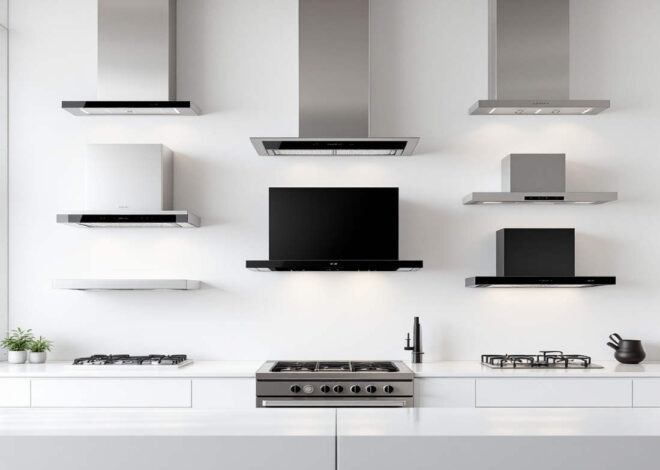
Understanding Recirculating Kitchen Exhaust: Is It Right for Your Home?
Are you tired of lingering cooking odours, excess heat, and greasy buildup in your kitchen? If so, you’re not alone! Many home chefs dream of a cleaner, more efficient way to ventilate their culinary haven. Enter the recirculating kitchen exhaust system—a modern solution that promises to elevate your cooking experience while keeping your home fresh and inviting. Is it the best choice for your space?
What is a Recirculating Kitchen Exhaust?
Recirculating kitchen exhaust is a ventilation system that removes air pollutants and odors from the kitchen, recirculating them back into the room after being filtered. Unlike traditional kitchen exhaust systems which expel air to the outside, recirculating systems do not require a duct to be installed in the wall or ceiling. Instead, they use a series of filters to clean and purify the air before releasing it back into the room.
The main component of a recirculating kitchen exhaust system is the range hood. This is typically installed above the stove or cooktop and collects smoke, steam, grease, and other particles produced during cooking. The collected air then passes through one or more filters before being released back into the kitchen.
The first filter in a recirculating system is usually a grease filter, which captures any greasy residue from cooking. This prevents buildup on the fan and motor of the range hood and also helps improve indoor air quality by reducing grease particles in the air. The second filter is often made of activated carbon or charcoal, which absorbs odor molecules from cooking fumes. These filters are highly effective at removing strong smells like fish or garlic.
One major benefit of using a recirculating kitchen exhaust system is its flexibility in installation. As mentioned earlier, it does not require any ductwork to be installed, making it an ideal option for homes without existing ventilation systems or those with limited space for ductwork. This also means that there are no external vents or chimneys needed for expelling air outside, making it suitable for apartments or condominiums where such modifications may not be allowed.
Another advantage of using a recirculating system is its energy efficiency. Because it does not require any outside venting, there are no drafts created when using this type of ventilation compared to traditional systems that pull in cold outside air while expelling warm inside air. This can help reduce heating and cooling costs throughout the year.
However, it is important to note that recirculating kitchen exhaust systems may not be as effective as traditional systems in removing all types of air pollutants. While they are efficient at removing grease and odors, they may not be able to remove smoke or steam as effectively. In addition, the filters will need to be regularly cleaned or replaced to maintain their effectiveness.
Recirculating kitchen exhaust is a viable option for homes without existing ventilation systems or where ductwork installation is not possible. It offers flexibility in installation and energy efficiency while still effectively removing grease and odors from the kitchen. However, it may not be suitable for all types of cooking fumes and requires regular maintenance to ensure optimal performance.
How Does Recirculating Kitchen Exhaust Work?
Recirculating kitchen exhaust systems operate by filtering air rather than venting it outside. When you cook, the hood captures smoke, steam, and odors. A fan then circulates this air through a series of filters.
The first line of defense is usually a grease filter. It traps larger particles and prevents them from clogging the system. After that, activated charcoal filters take over, absorbing odors and impurities.
Once filtered, the cleaned air is released back into your kitchen. This cycle continues every time you turn on the exhaust fan while cooking.
It’s crucial to choose high-quality filters for optimal performance. Regularly replacing these components ensures efficient operation and promotes better indoor air quality.
This system works well in homes where external venting isn’t feasible due to structural limitations or design preferences.
You may also read (kitchen flooring options guide)
Pros and Cons of Recirculating Kitchen Exhaust
Recirculating kitchen exhaust systems come with distinct advantages. They are often easier to install because they don’t require ductwork. This makes them ideal for homes without existing ventilation channels.
These systems also filter air before returning it to your kitchen, which can improve indoor air quality by reducing smoke and odors. They’re typically more affordable than traditional vented models, making them budget-friendly.
However, there are downsides to consider. Recirculating units may not be as effective in removing heat and humidity from the cooking area compared to their ducted counterparts.
The filters need regular replacement or cleaning, adding an ongoing maintenance task to your routine. Depending on usage frequency, this could lead to additional costs over time.
Understanding these pros and cons is essential when deciding if a recirculating kitchen exhaust system aligns with your cooking habits and home setup.
Factors to Consider When Deciding on a Kitchen Exhaust System
Choosing the right kitchen exhaust system involves several important factors. First, consider the size of your kitchen. A larger space may require a more powerful exhaust to effectively remove smoke and odors.
Evaluate your cooking habits as well. If you frequently fry or grill, a robust system is essential for managing grease and heat. On the other hand, if you mostly use light cooking methods, a less intensive option might suffice.
Noise levels also play a role in your decision-making process. Some systems operate quietly while others can be quite loud during use. Think about how this will impact your dining experience.
Lastly, budget is crucial. Costs may differ greatly depending on features and brand reputation. Assess what fits within your financial parameters without sacrificing quality or efficiency.
Maintenance and Cleaning Tips for Recirculating Kitchen Exhaust
Keeping your recirculating kitchen exhaust clean is essential for optimal performance. Regular maintenance prevents grease buildup and ensures the filters work effectively.
Start by checking the filters every month. Most models have washable filters, but some may require replacement. If they’re greasy or discolored, it’s time to clean or swap them out.
To clean washable filters, soak them in warm soapy water for about 15 minutes. Use a soft brush to scrub away stubborn grime before rinsing thoroughly and letting them air dry completely.
The hood surface also needs attention. Wipe it down with a damp cloth and mild detergent weekly to eliminate dust and grease splatters.
Don’t forget the fan! Dust can accumulate quickly, affecting airflow. Gently vacuum any accessible parts using a soft brush attachment to keep everything running smoothly.
Establishing this routine will prolong the life of your kitchen exhaust system while ensuring fresh air circulates throughout your home efficiently.
Alternatives to Recirculating Kitchen Exhaust
If recirculating kitchen exhaust isn’t the right fit for your home, there are several alternatives worth considering. One popular option is a ducted range hood. This system vents air outside, effectively removing smoke, odors, and grease from your kitchen.
Another alternative is an under-cabinet hood. These models can blend seamlessly with your cabinetry while providing powerful ventilation. They make efficient use of space without compromising style or function.
Wall-mounted hoods offer another stylish option. These units come in various designs and finishes to match any decor.
For those looking for portability, consider a portable air purifier designed specifically for kitchens. It captures airborne particles and helps maintain fresh air without permanent installation.
Each of these options has its own advantages depending on your cooking habits and kitchen layout. Exploring these choices can help you find the perfect solution tailored to your needs.
Conclusion
When it comes to kitchen exhaust systems, understanding your options is key. Recirculating kitchen exhaust can be a practical solution for many homes, especially where ducting may not be feasible. It offers flexibility and ease of installation but also has its limitations.
Evaluating the pros and cons helps clarify whether this system fits your cooking style and home layout. Consider factors such as the size of your kitchen, frequency of cooking, and any specific needs you might have regarding air quality.
Regular maintenance is crucial in keeping recirculating systems effective. By cleaning filters regularly and ensuring fan components are in good condition, you enhance performance while maintaining a pleasant atmosphere in your home.
Alternatives exist if recirculating systems don’t meet your expectations or requirements. Ducted hoods provide powerful ventilation by expelling air outside but require more extensive installation work.
Selecting the right kitchen exhaust system ultimately hinges on personal preference balanced with functionality. Evaluate all aspects carefully to ensure that you make an informed choice tailored to your home’s unique needs.
You may also read (kitchen hoods benefits types necessity)


